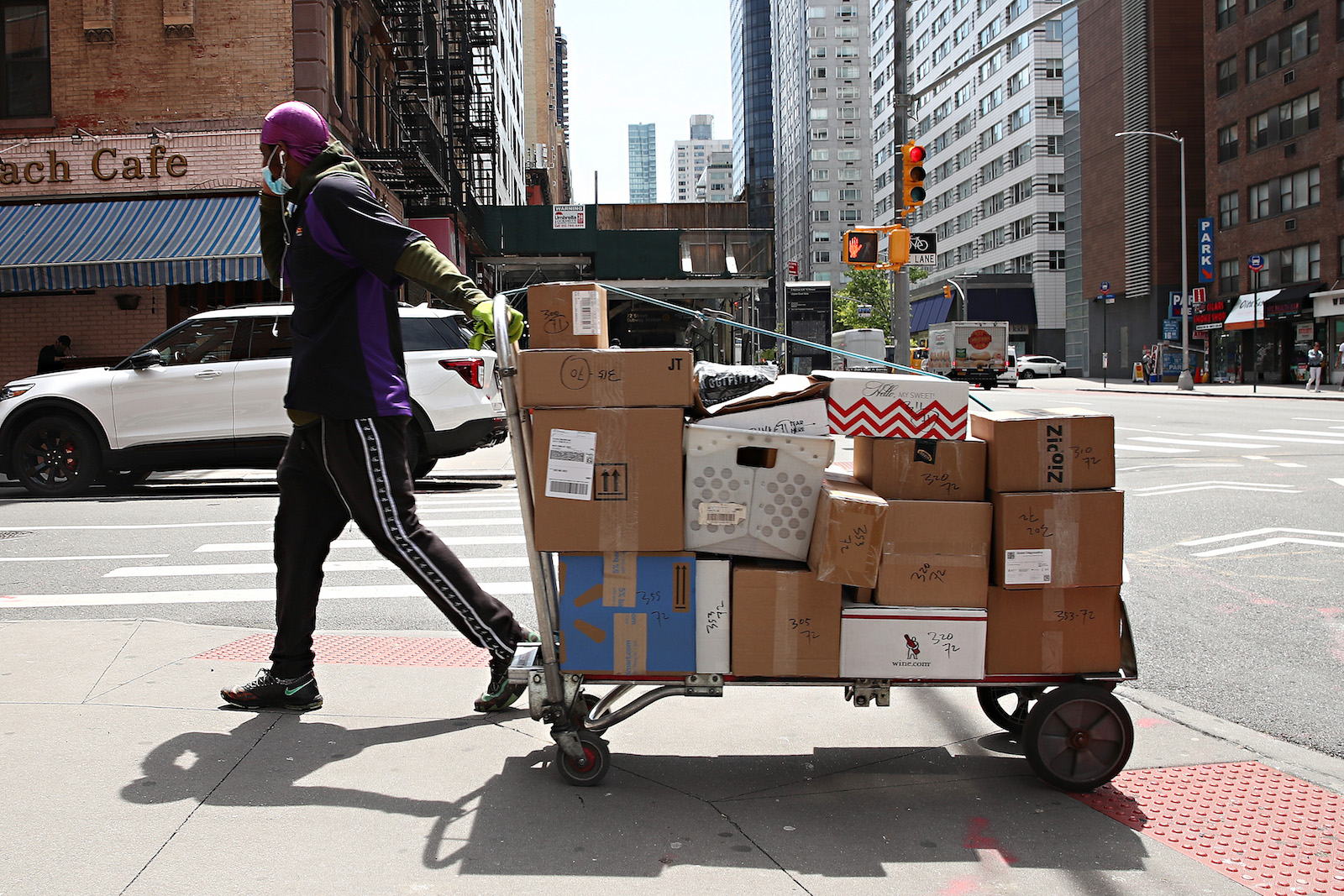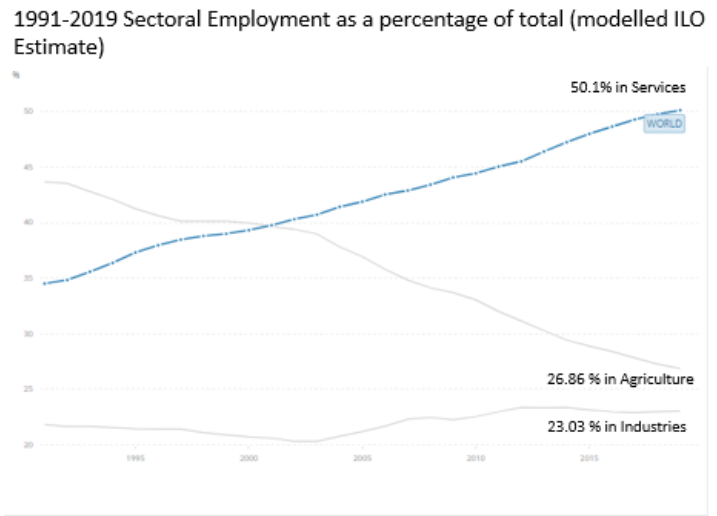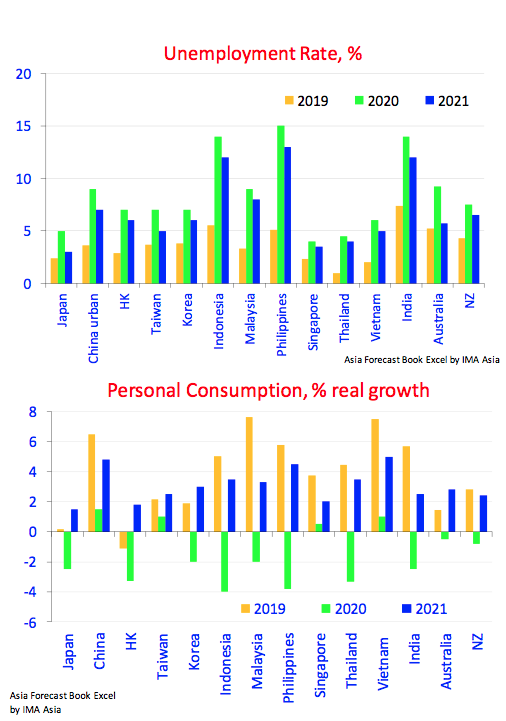Post-Pandemic, Human Interactions Still Power Global Business

A person delivers packages while wearing a mask during the coronavirus pandemic on May 14, 2020, in New York City. The pandemic has shown us that humans continue to be at the forefront of the Fourth Industrial Revolution.
Photo: Cindy Ord/Getty Images
Prior to COVID-19 unleashing health, political and economic havoc across the world, discussions on the future of work had emphasized a global workforce on the brink of an existential crisis arising from the infinite, yet-to-be-realized potential of artificial intelligence and machine learning.
Confidence in this outlook rested on the expectation that a growing number of people would be unable to continue making their economic contribution to society because superior machine learning would take over their jobs to perform the work more efficiently and effectively.
Indeed, the digital revolution has demonstrated that AI and machine learning technologies have moved far beyond delivering low-wage or blue-collar jobs. These sophisticated technologies now claim to have the capabilities to fundamentally redefine and potentially supplant highly skilled knowledge worker roles, such as surgeons, legal experts, diagnostic professionals and risk analysts, to name a few.
However, the COVID-19 health crisis has exposed some of the fault lines in this argument: If robots or AI could entirely replace humans in these roles, these services would not be on the edge of breaking down to the extent to which they are now. The pandemic has shown us that humans continue to be at the forefront of the Fourth Industrial Revolution and all subsequent revolutions in the world of work.
Reality Versus Prediction
At the World Economic Forum annual meeting in January 2020, leaders discussed the challenge of upskilling one billion people by 2030 to prepare for the job transformations caused by technology disruptions. The International Labour Organization figures from April 2020 estimate that the COVID-19 pandemic has significantly impacted 1.6 billion workers in the informal economy — 76% of informal employment worldwide — leading to a 60% decline in their income.
The mass job cull that many future-of-work commentators predicted would stem from the exponential growth in AI and automation has instead been precipitated by the wild card of a pandemic. And the losses have stacked up in record time, establishing the current limitations of AI and technology when it comes to replacing the work that requires humans at the forefront.
Jobs Based on Human Interactions Help Power Economies
With a half (50.1%) of total employment across the world estimated to be in the services sector (79% for North America), it’s safe to say that a majority of jobs fueling economic growth and prosperity belong to sectors like travel, tourism, hospitality and retail — those hit hardest by the pandemic. Lockdowns and social distancing that have kept workers away from employment have pushed economic contraction to lows the world has not seen since the Great Depression.
Even for global e-commerce majors like Amazon, which have automated their warehouses to a significant degree, many crucial tasks, such as delivery, are still completed entirely by humans. The COVID-19 pandemic has prompted us to rethink the macroeconomic impact of the mass annihilation of such frontline roles in the services sector.
Until very recently, mass redundancies were the subject matter of analytical modeling and future projection for estimated skill gaps arising from AI leaps. The debilitating impact of partial or complete income loss on economies has played out at a mind-numbing pace in the last six months, and governments and policymakers have yet to come to grips with it.
Economic recovery or expansion of any kind is unlikely unless employees (who are also consumers) are confident about future income generation. Any uncertainty about future employment will significantly curtail spending and consumption. Danish people under lockdown, for example, cut household spending on services such as travel and entertainment by 80%. Danish economists reckon that people in next-door Sweden, which decided not to lock down, cut spending by about as much.
Economic data show that unprecedented government stimulus packages have fallen short of expectations in propping up consumer demand adversely affected by income contraction. The unsustainability of government-sponsored employment support schemes over the long term sheds new light on the concept of universal basic income, which was emerging as a viable alternative for a world without work for humans.
The Fundamental Difference
Why haven’t the powerful AI interventions of our time, like Google’s DeepMind, been at the forefront of developing solutions to the current COVID-19 crisis? The highly sophisticated machine learning programs that establish complex neural networks to make connections and reach meanings without relying on pre-defined behavioral algorithms rely on past data patterns. The bigger and richer the base data, the more robust the solution — and herein lies the challenge: Events like the current pandemic have no precedent in scale and scope and therefore no historical data to draw upon. Unprecedented risks without past data patterns pose the most significant threat globally, as stated in the World Economic Forum’s Global Risk Report 2020. Our collective ability to build resilience and rebound from a crisis — now and in the future — depends on the distinctly human capability for proactive planning and navigating new, previously unknown risks that pose a serious global threat.
The Manifest Construct Post-COVID-19
Spending erosion due to loss of income or jobs, economic contraction and already stunted demand is sure to cause a severe setback the world may not recover from in a long time. The looming fear of robots taking away a large number of human jobs is an idea that — for now, at least — the world seems less prepared to confront.
What cannot be overlooked, however, is that the pandemic created an overnight need for “minimum contact” or “contactless” product and service delivery to uphold social distancing measures. The slow and cautious reopening of economies post-lockdown has galvanized investment decisions in automation to help shield employees and customers from sickness while ensuring delivery of critical goods and services for business continuity. It’s no surprise, then, that companies like Gap and Walmart are speeding up the use of robots and warehouse automation to limit contact between workers.
The jolt dealt by the pandemic has forced organizations to shift the focus of automation decisions away from a unidimensional “human versus machine” framework to business resiliency and protection against present and future disruptions. The latter construct carries more promise for a symbiotic relationship between automation and employment that helps protect people and businesses. Given the right policy impetus, this new thinking will help reconfigure business strategies to promote equitable automation, where humans play a central role, working directly or indirectly with machines instead of being replaced by them.








